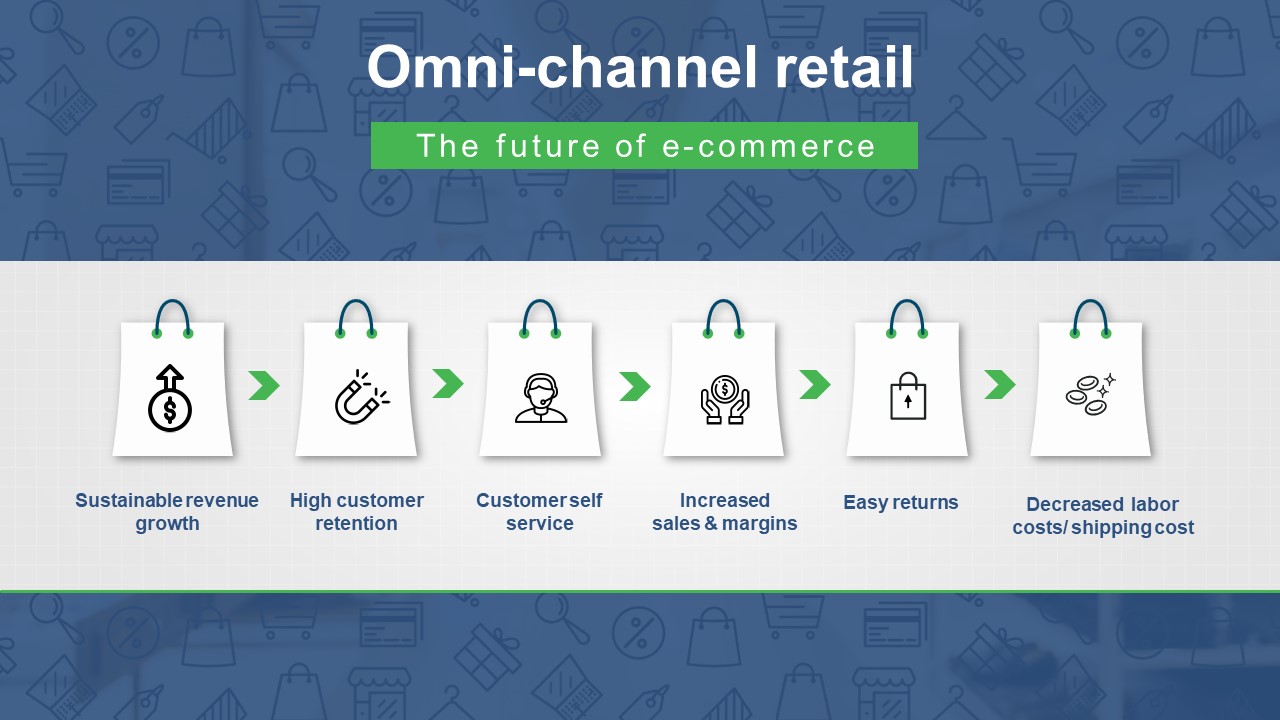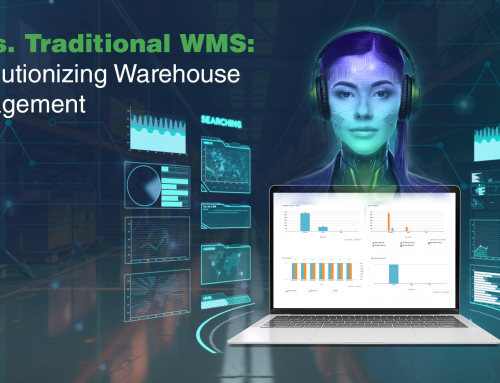Retailers today wish to give their customers an effortless shopping experience. These days customers are not only looking for the perfect product that suits their needs, but they are also demanding a seamless affair in getting that product.
The way to this smooth purchase journey starts with omnichannel retail.
What is omnichannel retail?
Omni channel retail refers to a multichannel method that aims at providing the customer with a seamless shopping experience whether the client is shopping online from a mobile device, a laptop, or from a retail store nearby.
What is the difference between omnichannel and multichannel retail?
One must not confuse multi-channel retail with omnichannel retail, the terms can’t be used interchangeably. The major difference between omnichannel and multichannel retail is the core of their focus. In multi-channel retail, the product is at the core and the focus is to offer the buying opportunity on different mediums. While omnichannel has customers at the core with a focus to cover all the possible sales channels which interact with each other seamlessly. Omni-channel provides the customer with an integrated shopping experience that multi-channel does not.
Why omnichannel?
Studies have shown that people use various channels while making a purchase. They might look at a product at a store and then buy the product online, or they might download coupons online and buy the product from a store or they might compare prices and buy from the place that offers the best deal. Omni channels make sure that the entire buying process is convenient and seamless; enhancing the user experience.
Brands that are embracing omnichannel retailing improve the overall buying experience of their customers and create more channels to increase the sales throughput. In fact, they have gone an extra mile to create a personalized experience by reaching their doorstep instead of focusing on driving the footfall to the stores.
Given below are 7 benefits of omni-channel retail and its impact on your business–
#1. Sustainable Revenue Growth- According to the research done by the IDC customers who buy from stores and from e-commerce websites have 30% higher customer lifetime value as compared to a customer who shops only from one channel. Retailers can capitalize on this potential value and have consistent revenue growth by giving customers the option to buy in person.
#2. High Customer Retention- In today’s competitive environment retaining a relationship with the customer is quite challenging. Brands are consistently researching and coming up with innovative ways to engage their customers. One of the approaches is how to create a personalized experience. Consistently following customer behavior through social media channels is one of the ways to gain deeper insight. Being individually distinguished and personally attended is what customers cherish.
#4. Customer Self Service- Customers embrace self-service for a sense of self-independence. All thanks to digital innovation driven by technology. At the same time, it also allows the consumer to keep in touch and receive feedback from the service provider through chatbots, social media response engagement, and call center support. If customers get answers to their questions without taking up Omni-channel Retail– The Future of E-commerce much time and resources, it increases business efficiency and customer satisfaction.
#5. Increased sales and Margins- Omni-channel setup allows customers to make a purchase from wherever they please. It gives retailers’ stock visibility and accessibility to the customers’ in their preferred channel. Moreover, it provides convenience to the customers and substantially increases the buying opportunities for various products offered by retailers. Most importantly it provides customers with a wide range of selection and numerous ways of accessing and purchasing that selection thereby enhancing sales.
#6. Easy Returns- Ease of returns improves the overall brand experience. Which means omnichannel gives a choice to make returns via multi-channels that further help in building the loyalty of the customer. Just think you are buying from a website but now you can return it back to the store next door? What needs to be adapted is technology stock management and pricing management – as each channel may have some different pricing to offer.
#7. Decreased labor costs/ Shipping cost- Over the long run, the retailers would be able to optimize inventory and reduce the amount of time taken which will significantly bring savings. Similarly, optimization can be done at the nearest omnichannel fulfillment center, items included in an order or in the available inventory, retailers can reduce shipping costs.
Let’s dig in more to understand what is required to form a successful omnichannel strategy?
In the majority of businesses, different combinations of strategies work for different business types. Omni-channel is no different. But there are certain aspects that can’t be overlooked if one has to build a seamless and profitable omnichannel strategy.
- Deciding the sales channel: there are n number of sales channels from where one can enable their customers to shop. To decide which ones to go for, just observe the behaviour of your audience, where they are spending most of their time, and proceed accordingly.
- Marketing: it’s important to talk about your product on the right marketing channels. Be it via paid ads or social media or running email campaigns. Making the customer aware and informed about your product is an important part of building your omnichannel strategy.
- Fulfilment: connectivity and consistent brand experience is the key for a successful omnichannel strategy. To offer these, the brands need to focus on the very important aspect of partnering with a service provider who is also omnichannel ready. Look for their past record and analyze how they have performed in terms of their inventory accuracy, OTIF and number of customer complaints.
Many of the service providers claim to be omni channel service providers, but are they really? Unless or until your service provider can assure you that they can assist your customer to get their product when they want, where they want, and how they want, only then can you say they are the omni channel service providers.
Adopting an omnichannel strategy offers a 360-degree view of the buying behaviour of the customers which enables the retailers/ brands to improve the insights and understanding of their customers. Diving into the omni channel approach demands a lot of investment in terms of building a holistic approach to offer a seamless experience to the customers but it surely has its long-term payouts.
At Holisol, we call ourselves omni channel ready with our capabilities not just providing the infrastructure in terms of the physical network but we are also enabling it with the tech. We are handling different parts of omnichannel, be it multi-channel fulfilment from a single pool of inventory or pick-up centres, dark stores, customer care centre, return, and refurbishment. Whereas most of the service providers are restricted to one or two segments of omni-channel we at Holisol are doing B2B, B2C, D2C, Hyperlocal, and other segments as well.
For more information contact us at- [email protected]









